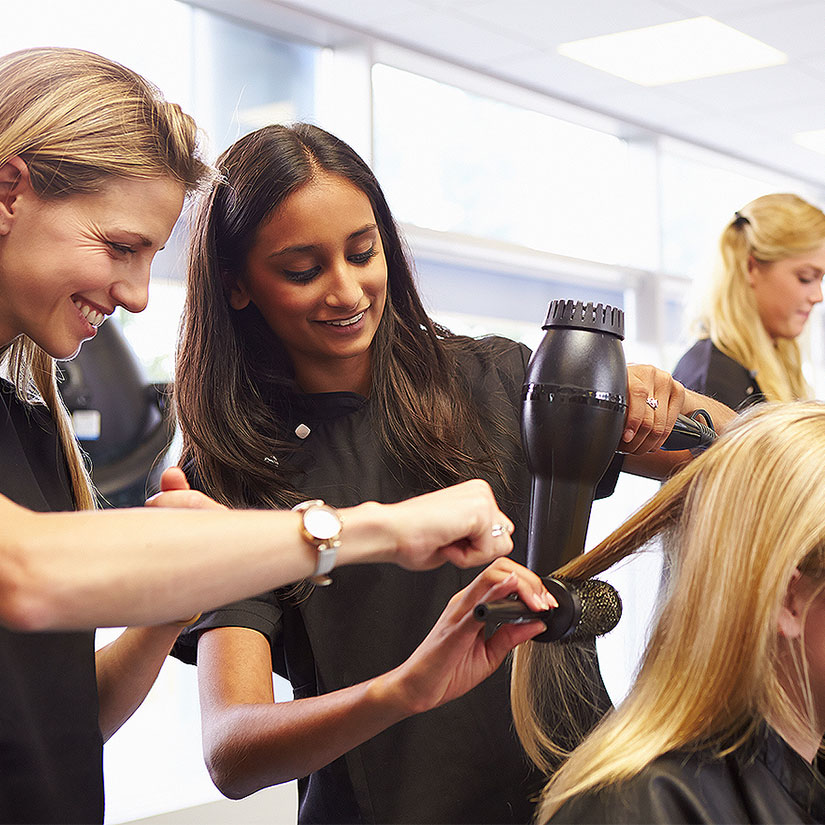Whether you’re interested in cosmetology or you’re just trying to learn more about your own hair, the idea of a perm probably strikes fear into your heart. However, there’s so much more to the perm than tight curls and intense treatments. Instead, texturizing volume perms, sometimes just called “texturizing treatments,” are the modern-day equivalent of the old-school perm. Here’s what you need to know about texturizing volume perms and their various benefits.
View this post on Instagram
Attribution: jennifer.beauty_
The Downfalls of Traditional Perms
A common conception of perms is that they are drying and damaging to your hair follicles. As a matter of fact, traditional perms may not be truly terrible for your hair, but they can easily become a problem if they’re not done perfectly. If you ever went with your mom to watch her get a perm, chances are that you remember perms being extremely difficult and very chemical-heavy. These old-school perms were terrible for your hair because of the very unique needs for each perm.
A good thing to remember is that even traditional perms can be fairly safe for your hair if a skilled cosmetologist applies it. There are many important elements that you need to consider, such as avoiding contact with the skin and allowing enough time for each part of the process. These elements are lessened with modern perms, but it’s still important to seek out a professional cosmetologist for it to be done correctly.
The Ins and Outs of Texturizing Volume Perms
Texturizing volume perms are, in essence, a rebranding of the old perms. Over time, people have been able to develop perm technology that doesn’t require quite as much chemical assistance. This can make it much safer for your hair. Additionally, if you already have issues with damaged hair, you should make sure you’re using an ultra-gentle perm option, like an acid perm.
There are many ways to add texture and volume to hair that don’t rely on extremely abrasive chemicals anymore. Different types of perms exist that add texture and volume to different parts of the hair, that add texture and volume with different chemical mixes, or that add more or less curl. There are new ways to create semi-permanent changes to your hair texture or volume that can be less damaging than the old ways.
Implementing the Texturizing Perm for Different Hair Needs
One thing to remember is that this new style of perm has its own limits. Perms have expanded far beyond the one-size-fits-all model that tended to flourish back in the day. Here are just a few of the different types of perms you might need to learn more about if you’re planning to do perms in the future:
- Body Waves: Loose, bouncy curls, typically less defined than other perms
- Spiral Perms: Springy, tightly coiled curls, typically used to rejuvenate already curly hair
- Spot Perm: Only curls certain areas, often used by people with curly hair to even out the curl
- Multi-Textured Perm: Combination of tight and loose curls, often used to create an organic look
- Volumizing Perm: Volume or waves rather than curls, used to give hair lift
These are only a few of the different types of perms out there. If you’re interested in learning more about perms and how to implement them, you might want to consider hair school, as the intricacies of perms are far beyond what an article could cover.
Conclusion
As you can see, perms have grown a lot since the old days when you would go to the hair salon with your mom. There are many ways to do a perm, including ways that can avoid long-term hair damage. If you’re thinking about how cool perms can be nowadays, consider signing up for Tricoci University of Beauty Culture’s cosmetology program. You’ll get to learn more about all sorts of cosmetology skills, including but certainly not limited to modern-day perms.





